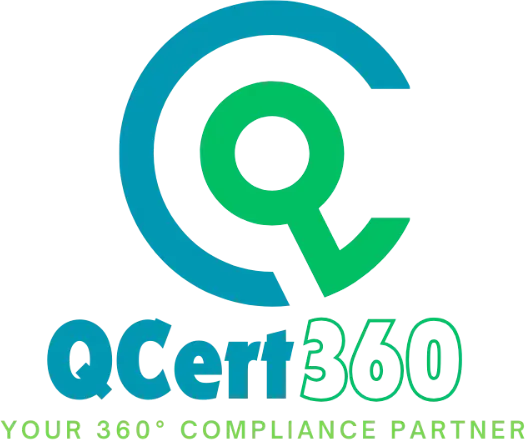
Energy is one of the few line items that quietly eats margin every single day. You pay for it whether you run efficiently or not. ISO 50001 flips that script. It gives manufacturers a structured, data-driven way to find wastage, lock in savings, and prove—internally and to regulators, customers, and investors—that you’re shrinking both cost and carbon with intent, not luck.
If you already run ISO 9001 or ISO 14001, ISO 50001 will feel familiar. Same Plan‑Do‑Check‑Act rhythm. Same emphasis on risk-based thinking, objectives, KPIs, internal audits, and management review. The difference: everything is cantered on energy performance—how you measure it, improve it, and sustain the gains.
Let’s break down what ISO 50001 actually does for a factory, how it works in practice, and what kind of results are realistic. I’ll also show you how a Tier‑1 automotive components manufacturer used ISO 50001 to claw back 11.8% of its electricity consumption in year one—without buying a single new compressor or boiler. And finally, where QCert360 fits in if you want to implement it without the usual trial-and-error.
What ISO 50001 really asks you to do
Forget the jargon for a second. ISO 50001 expects you to:
- Know where your energy goes
Build an energy review: map significant energy uses (SEUs), load profiles, operating schedules, and the variables that drive consumption (production volume, ambient temperature, product mix, shift patterns). - Set a data-backed starting line
Establish an energy baseline (EnB) and energy performance indicators (EnPIs) that normalize for variables. If you don’t normalize, you’ll fool yourself—energy intensity often rises or falls with throughput. - Commit to targets and an action plan
Define measurable improvement objectives (kWh/part, GJ/tonne, kWh/m², etc.), assign owners, timelines, budgets, and verification methods. - Meter, monitor, and verify
Sub‑meter the big loads. Trend data. Correlate with production. Run M&V (measurement and verification) on each project so savings aren’t “estimated,” they’re proven. - Control what matters day-to-day
Write and enforce operational controls for SEUs—compressed air pressure setpoints, oven idle modes, HVAC scheduling, boiler blowdown frequency, etc. - Design and procurement rules
Bake energy performance into CapEx, equipment specs, and supplier evaluations. Don’t buy another 92% efficient motor when a 96% IE4 unit pays back in 18 months.
Audit, review, improve
Internal audits, management reviews, corrective actions—the PDCA loop that makes the whole thing stick year after year.
The business case (in plain numbers)
Typical first-year results we see in manufacturing with a disciplined ISO 50001 rollout:
- 8–15% reduction in electricity consumption on major lines through no/low-capex measures (setpoint optimization, leak fixing, scheduling, heat recovery already available but unused).
- 3–7% fuel savings in boilers and furnaces via combustion tuning, insulation fixes, and improved maintenance intervals.
- Payback on sub‑metering and data analytics: 6–18 months.
Carbon reduction that can be credibly reported in ESG disclosures and used to unlock green financing or customer scorecard wins.
SCase study: 11.8% energy reduction without new hardware
Sector: Tier‑1 automotive components manufacturer (India)
Scale: ~500,000 sq ft plant, 1,200 employees, multi-line machining, heat treatment, and surface finishing
Baseline energy spend: ~₹10.5 crore/year (electricity + natural gas)
Problems they knew they had (but couldn’t quantify):
- Compressed air costs were high, but they didn’t know where leaks or misuse occurred.
- Heat-treatment furnaces ran at constant setpoints—even during idle or changeovers.
- HVAC was manually operated by shift supervisors, often left running through weekends.
- No normalized EnPIs. “Energy per part” looked better when volumes rose, masking inefficiency.
What changed with ISO 50001:
- Energy review & metering plan
The plant installed sub‑meters on compressors, furnaces, major machining lines, and HVAC chillers. Data was streamed into a simple dashboard that matched kWh and Nm³ of gas to production volume, ambient temperature, and shift data. - Baselines & EnPIs
They built separate EnPIs for the three biggest SEUs:- kWh per machined part (normalized by part complexity index)
- kWh per tonne of heat-treated output (normalized by soak temperature)
- kWh per TR‑hour for the central chiller (normalized by wet bulb temperature)
- Action plan (mostly no/low-capex):
- Compressed air: Leak survey + tagging + weekly closure routine: 4% total plant kWh saved.
- Furnaces: Introduced automatic setback temperatures for idle windows and better door-seal maintenance: 1% gas reduction.
- Chillers: Reset condenser water approach temperatures and added VFD logic to pumps: 7% chiller energy reduction.
- Scheduling: Shifted two high-load processes to off-peak tariff slabs, trimming demand charges by ₹24 lakh annually.
- Behavioral controls: HVAC lockout during non-production hours, with override only via maintenance.
- Verification
Each project had a defined M&V plan (aligned with IPMVP Option A/B). Finance signed off on verified savings, not projected savings.
Year-one outcome:
- 11.8% reduction in electricity consumption; 3.4% reduction in natural gas.
- ₹1.36 crore net annual savings (after metering and consulting costs).
- Scope 2 CO₂e emissions dropped ~1,450 tonnes.
- Procurement policy updated to require energy performance criteria in all equipment RFQs.
- ISO 50001 certification achieved in 9 months.
They didn’t buy new compressors. They didn’t replace furnaces. They just used data, discipline, and ISO 50001’s structure to squeeze out the waste they already suspected was there.
Implementation roadmap (the practical version)
- Executive commitment and boundary definition
Decide which sites, processes, and utilities are in scope. Appoint an Energy Manager with real authority. - Energy review and metering architecture
Don’t boil the ocean—meter SEUs first. Build a data model that ties energy to drivers (volume, temperature, hours, mix). - Baselines and EnPIs
Normalize or you’ll misread trends. Choose EnPIs that operations can actually influence. - Objectives, targets, action plan
Prioritize high-ROI no/low-capex items first. Lock each action to an owner, timeline, budget, and M&V plan. - Operational controls & competence
Document how you’ll keep gains in place: setpoints, schedules, maintenance specs, and training. - Design & procurement integration
Mandate lifecycle cost (LCC) or total cost of ownership (TCO) in CapEx decision-making. - Internal audit & management review
Audit more than documents—challenge whether EnPIs still make sense, whether controls are followed, and whether savings are real. - Certification
Once the system runs cleanly for a few months, bring in a certification body.
Where QCert360 helps (and why it matters)
Plenty of plants “implement” ISO 50001 by producing binders of documents and a few token meters. The certificate arrives, the savings don’t. QCert360’s team avoids that trap by treating ISO 50001 as a performance program first, certification second.
Here’s what we actually do:
- Gap assessment that speaks numbers, not narratives
We benchmark your current energy performance, metering maturity, and EnPI readiness. You’ll see a quantified business case before you commit. - Smart metering architecture
We design a sub‑metering plan that captures enough data to drive decisions—without turning your plant into an IT project nobody can maintain. - Robust EnPIs & baselining
We help you normalize energy performance correctly so gains (and regressions) are visible and defensible. - M&V aligned with IPMVP
Savings get executive and finance sign‑off because they’re measured, not guessed. - Integrated management systems
Running ISO 9001, 14001, or 45001 already? We integrate 50001 to share audits, management reviews, procedures, and risk frameworks—less friction, lower cost. - Capability building
We train your engineers and operators to own the system, so you don’t become dependent on consultants. - Fast, clean certification
We prepare you for audits the right way—evidence-rich, number-driven, with auditors seeing a system that actually works.
If you want ISO 50001 to pay for itself—and keep paying every year—talk to us.
QCert360
Email: contact@qcert360.com
Phone: +91 7483870406
Tell us your annual energy spend and we’ll tell you, realistically, what ISO 50001 can save—and how fast.
FAQ's
1. What is ISO 50001 certification?
ISO 50001 is an international standard that helps organizations manage and reduce energy use through a structured Energy Management System (EnMS).
2. Why is ISO 50001 important for manufacturers?
It enables manufacturers to cut energy costs, improve efficiency, meet sustainability goals, and reduce their environmental impact.
3. How does ISO 50001 help reduce energy bills?
By identifying energy hotspots, optimizing equipment use, monitoring consumption, and setting measurable energy performance targets.
4. Is ISO 50001 suitable for small and medium-sized manufacturing businesses?
Yes. The standard is scalable and adaptable, making it valuable for both SMEs and large-scale manufacturers.
5. What are the main components of ISO 50001?
It includes energy planning, baseline measurement, performance indicators, operational control, internal audits, and continual improvement processes.
6. How does ISO 50001 support sustainability goals?
It reduces greenhouse gas emissions and helps manufacturers align with global climate commitments and ESG reporting standards.
7. Can ISO 50001 integrate with ISO 9001 or ISO 14001?
Yes. ISO 50001 shares the same high-level structure, making it easy to integrate with other ISO management systems.
8. How long does it take to get ISO 50001 certified?
Typically 3–6 months, depending on your facility’s size, complexity, and current energy management practices.
9. Does ISO 50001 require continuous monitoring of energy use?
Yes. Ongoing measurement, analysis, and improvement of energy performance are central to the standard.
10. How can QCert360 help with ISO 50001 certification?
QCert360 offers expert support in energy audits, documentation, process optimization, and certification preparation tailored to manufacturing operations.


